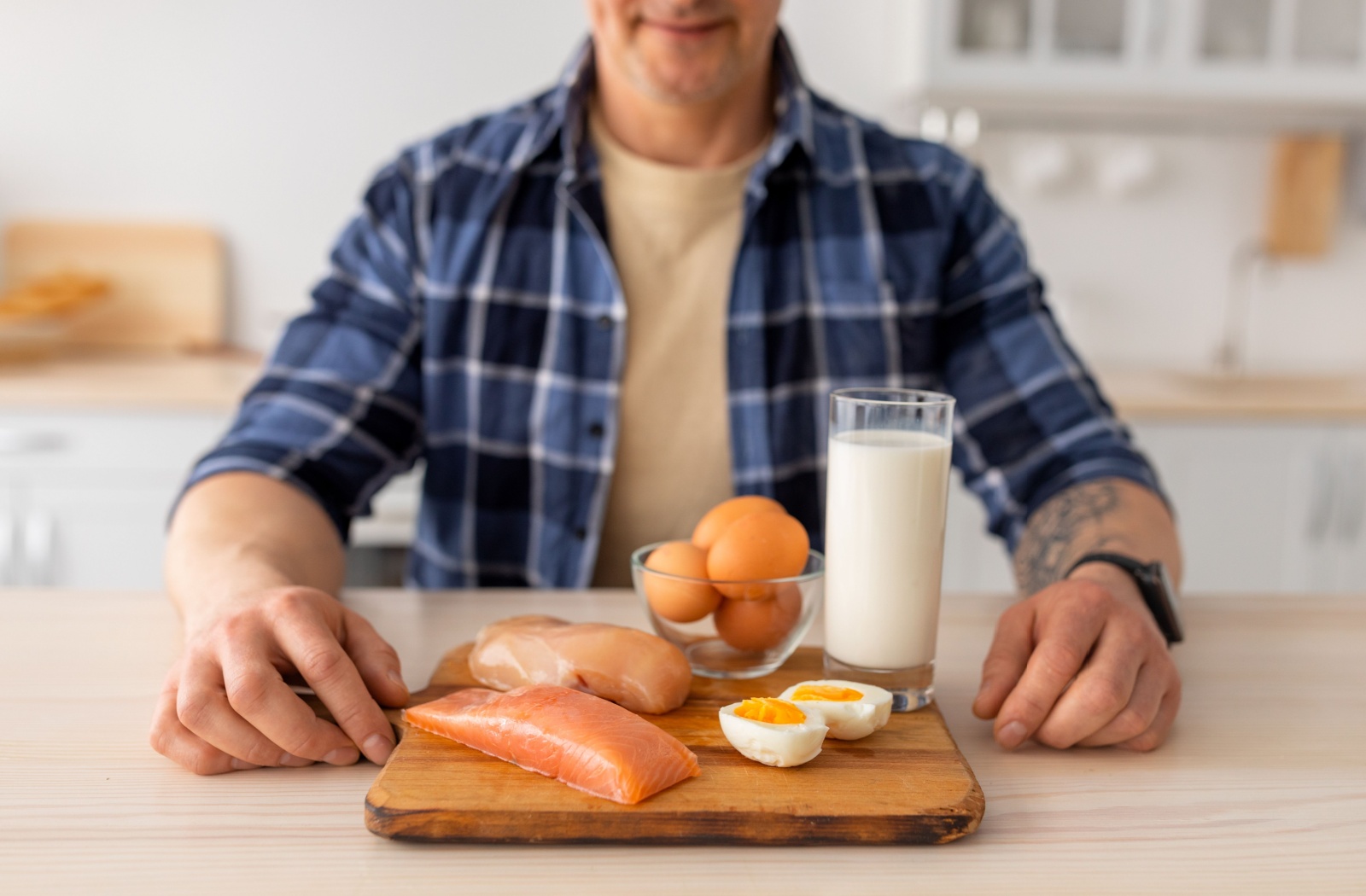As your body undergoes numerous changes throughout life, the nutritional needs also change. Maintaining a balanced diet rich in high-quality protein is crucial for older adult’s health, vitality, and independence.
High-protein foods for changing dietary needs in older adults can include:
- Lean meats
- Fish and seafood
- Eggs
- Dairy products
- Legumes and pulses
- Nuts and seeds
Understanding Protein Needs for Seniors
Healthy aging requires adapting to changing dietary requirements, and protein plays a pivotal role. As we age, the body becomes less efficient at processing protein, which means older adults may need adequate protein to maintain muscle mass, bone health, and overall well-being.
Protein is the building block of life and crucial for muscle health. Maintaining muscle mass is particularly important for older adults since it contributes to mobility, independence, and a better quality of life.Protein helps counteract the natural muscle loss that occurs with aging, a condition known as sarcopenia.
While older adults need an adequate amount of protein in their diet, a question that arises is how much protein? The Recommended Dietary Allowance (RDA) for protein is about 0.8 g/kg/day for adults 65 and over. By understanding these protein needs, caregivers and family members can better support their loved ones as they age.
High Protein Foods for Senior Nutrition
When it comes to selecting high-protein foods, variety and simplicity are key. Incorporating a diverse range of sources makes sure that older adults receive all the essential amino acids needed for good health.
Here are high-protein foods and snacks perfect for older adults, featuring both animal and plant-based sources.
Lean Meats
Chicken, turkey, and lean cuts of beef are excellent protein sources. They’re versatile in meals and easy to prepare in various ways. Easy-to-prepare meals with lean meat include:
- Chicken, tomato, and avocado sandwich on whole-grain bread
- Chicken breast with roasted vegetables and hummus
- Whole-wheat pasta with ground turkey and tomato sauce
- Steak with salsa
Fish & Seafood
Rich in omega-3 fatty acids, fish like salmon, tuna, and mackerel are fantastic for heart health and provide high-quality protein. Easy-to-prepare meals with fish include:
- Roasted salmon with zucchini and sweet potato
- Fish with spinach
- Tuna salad
- Baked fish with vegetables
Eggs
Eggs are an affordable and complete protein. They’re quick to cook and offer numerous culinary possibilities. Easy meals with eggs include:
- Vegetable omelet and whole-grain toast
- Eggs with kale and sweet potato
- Hard-boiled, scrambled, poached, or sunny side up
Dairy Products
Greek yogurt, cottage cheese, and milk are high in protein and a great source of calcium to support strong bones. Easy snacks with dairy products include:
- Smoothie with spinach, fruit, and yogurt
- Fruit and yogurt
- Greek yogurt with granola and berries
Legumes & Pulses

Lentils, chickpeas, and beans are plant-based powerhouses offering protein and fiber, promoting digestive health. Easy meals with lentils include:
- Black bean and sweet potato quesadillas
- Bean dip
Nuts & Seeds
Nuts and seeds provide protein and healthy fats. Add these to meals and salads, make pesto, or enjoy them on their own.
Tofu & Tempeh
Plant-based options for vegetarians or those looking to diversify protein sources can consider tofu and tempeh, which are incredibly adaptable to different flavors and cuisines.
Tips for Incorporating High-Protein Foods into Meals
Here are some practical tips for making high-protein meals enjoyable and accessible for older adults to meet their dietary needs:
- Plan: Create weekly meal plans that incorporate high-protein foods. Planning beforehand can help with grocery shopping and making sure older adults have a balanced intake throughout the week.
- Simple preparations: Opt for easy-to-cook recipes that don’t require extensive preparation or cooking times. Quick stir-fries, grilled meats, and one-pot dishes are excellent choices.
- Use flavors: Herbs, spices, and marinades can enhance the flavor of meals. A little seasoning can go a long way in transforming a simple dish.
- Snacking smart: Encourage protein-rich snacks like yogurt parfaits, boiled eggs, or nut butter on whole-grain toast. These can help maintain energy levels between meals.
- Get creative: Experiment with combinations to keep meals exciting.
Addressing Challenges in Senior Nutrition
Increasing protein intake in older adults can sometimes be challenging due to appetite changes, dietary restrictions, or health issues. However, with the following thoughtful approaches, you can manage these challenges effectively:
- Appetite changes: Older adults with a reduced appetite can try smaller, more frequent meals throughout the day. Nutrient-dense smoothies or shakes can also be a convenient option.
- Chewing difficulties: For those with dental issues, focus on softer protein sources like eggs, yogurt, or tender cuts of meat. Slow cooking methods can also make some foods more palatable.
- Dietary restrictions: Consider alternatives for dietary restrictions.
Culinary Dining for Overall Well Being
A high-protein diet improves muscle health, prevents sarcopenia, and helps maintain energy balance, weight, and cardiovascular function in older adults for overall well-being. Older adults can enjoy a healthier, more fulfilling life by prioritizing protein intake in their daily meals.
For additional support for meals tailored to the dietary needs of older adults, contact Summer Village Senior Living for information about our culinary program.









